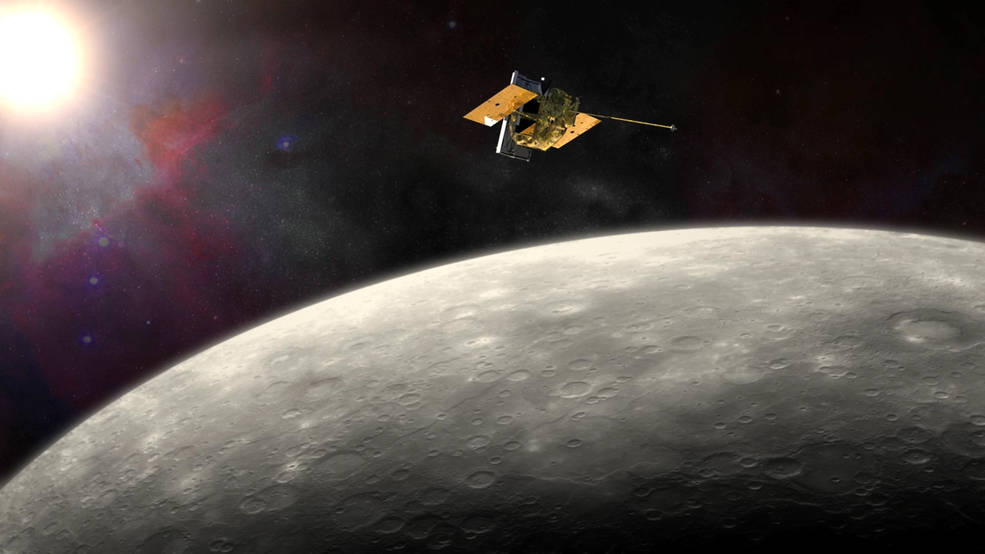
After its six-and-a-half year long flight and four year mission, NASA’s humble Messenger spacecraft is about to reach an explosive conclusion when it crashes into the surface of Mercury sometime around April 30, 2015. Originally launched in 2004, the Messenger probe was sent on a suicide mission destined for Mercury, where it would observe the little red planet for a period of four years while testing various equipment.
With Messenger plummeting at a rate of 8,750 miles per hour, NASA expects the impact to be quite dramatic, but unfortunately, it’s crashing on the side of planet facing away from Earth.
“Following this last maneuver, we will finally declare the spacecraft out of propellant, as this maneuver will deplete nearly all of our remaining helium gas,” said Daniel O’Shaughnessy, mission systems engineer at NASA’s APL (Applied Physics Laboratory), “at this point, the spacecraft will no longer be capable of fighting the downward push of the sun’s gravity.”
Messenger has been orbiting Mercury since March 18, 2011 — three years longer than its one year lifespan would’ve otherwise implied. It’s since proven that Mercury’s polar craters contain two mile-thick layers of frozen water, and has mapped out the planet’s diverse chemical makeup using its X-ray Spectrometer (XRS) and Mercury Dual Imaging System (MDIS), effectively shedding clues about the planet’s origin.
In addition to teaching scientists about the solar system’s history, it has also provided opportunities to compare photographs of Earth to those taken by the Cassini in 2013 when it was orbiting Saturn. Most importantly, Messenger’s close proximity to the sun allowed NASA to test its innovative heat-resistant and reflective ceramic cloth sunshade, a drape used to protect sensitive spacecraft electronics from both solar radiation and temperatures above 500 degrees Fahrenheit.
“For the first time in history we now have real knowledge about the planet Mercury that shows it to be a fascinating world as part of our diverse solar system,” said John Grunsfeld, associate administrator for the Science Mission Directorate at NASA Headquarters in Washington. “While spacecraft operations will end, we are celebrating MESSENGER as more than a successful mission. It’s the beginning of a longer journey to analyze the data that reveals all the scientific mysteries of Mercury.”
When it’s time for Messenger to meet its demise, the most obvious telltale sign of its destruction will be the sudden cease in data transmission. Although separated by a distance of 48 million miles, the radio waves enabling the communication link between NASA and its spacecrafts travel at the speed of life (186,282 miles per second); therefore, it’ll take approximately 4 minutes for Messenger’s final single to reach Earth.
*Update* The Messenger probe crashed at 3:26 p.m. EDT (1926 GMT) on 4/30/2015
Source: Extremetech
Advertisement
Learn more about Electronic Products Magazine





